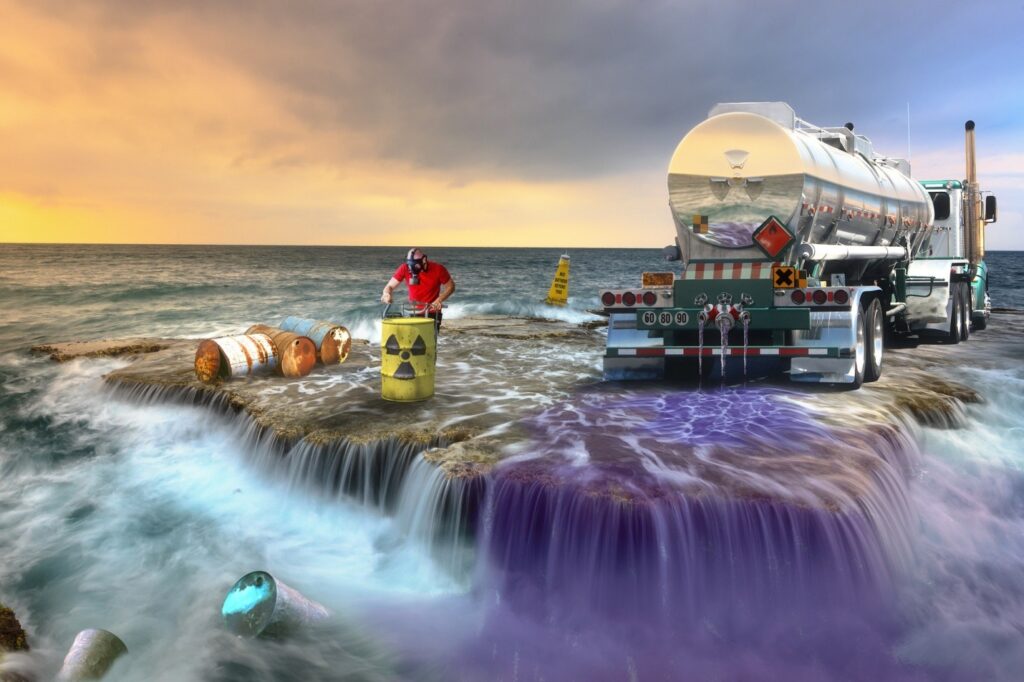The Definitive Guide to Reclaim Waste
The Definitive Guide to Reclaim Waste
Blog Article
Some Known Incorrect Statements About Reclaim Waste
Table of ContentsThe 30-Second Trick For Reclaim WasteWhat Does Reclaim Waste Mean?Reclaim Waste Can Be Fun For EveryoneEverything about Reclaim WasteThe Basic Principles Of Reclaim Waste
Explore the types, incidents, and types of fluid waste. Domestic sewer waste refers to the waste and products from a property septic system. This sort of waste is created by humans in homes, colleges, and various other buildings. This only includes sewage-disposal tanks that have a drainpipe field. The proper administration and disposal of residential sewer waste need fluid waste to be transferred to a sewer treatment plant where the proper approaches and tools are put on detoxify and get rid of waste.
Industrial waste typically includes potential hazards, such as combustible materials or a mix of liquid and strong waste products, and needs a much more sophisticated and in-depth disposal process. The disposal of commercial waste generally entails the filtering of waste prior to transport to make sure risk-free and appropriate disposal. Hazardous waste is produced from by-products and overflow of industrial procedures and manufacturing.
This type of waste can not utilize the same sewage administration transportation or processes as septic or industrial fluids. The hazardous waste administration process needs the examination and screening of liquid waste prior to it undergoes the disposal process (liquid waste removal). Overflow waste is the liquid waste that originates from overflow and excess stormwater in very booming areas or cities
Drainage waste can create contamination and flooding if not taken care of properly. Ensuring correct waste management can avoid catastrophes and lower ecological damage.
Excitement About Reclaim Waste
Get in touch with PROS Solutions today to learn more about our waste management and disposal solutions and the correct means to take care of the liquid waste you create.
(https://profile.hatena.ne.jp/reclaimwaste1/)This supposed 'wastewater' is not only a vital resource however, after therapy, will be released to our land, waterways or the ocean. Utilized water from commodes, showers, bathrooms, cooking area sinks, laundries and commercial procedures is known as wastewater.

water used to cool down equipment or clean plant and equipment). Stormwater, a type of wastewater, is drainage that moves from agricultural and metropolitan locations such as roof coverings, parks, gardens, roads, paths and rain gutters right into stormwater drains pipes, after rainfall. Stormwater moves neglected directly to regional creeks or rivers, at some point getting to the sea.
All about Reclaim Waste
In Queensland, many wastewater is treated at sewer treatment plants. Wastewater is carried from domestic or industrial websites with a system of sewage systems and pump stations, recognized as sewage reticulation, to a sewage treatment plant. City governments build, keep and operate most sewer therapy plants. Operators are accredited under the Environmental Management Act 1994 to discharge cured wastewater at an acceptable ecological requirement into rivers.
The Department of Natural Resources suggests city governments about managing, operating and keeping sewage systems and therapy plants. In unsewered areas, neighborhood governments may need owners to mount individual or family sewage treatment systems to treat domestic wastewater from bathrooms, cooking areas, bathrooms and laundries. The Department of Natural Resources authorises the use of household systems when they are proven to be reliable.
Most stormwater obtains no treatment. In some brand-new class, therapy find out here of some stormwater to get rid of clutter, sand and crushed rock has started using gross pollutant traps. Wastewater treatment happens in 4 stages: Gets rid of strong matter. Larger solids, such as plastics and other things wrongly discharged to sewers, are gotten rid of when wastewater is gone through displays.
Wastewater after that flows into large storage tanks where solids clear up and are removed as sludge. Oil and scum are skimmed from the surface. Makes use of tiny living organisms called micro-organisms to break down and eliminate remaining dissolved wastes and great particles. Micro-organisms and wastes are included in the sludge. Eliminates nitrogen and phosphorus nutrients that can cause algal blossoms in our rivers and threaten aquatic life.
Fascination About Reclaim Waste
Nutrient elimination is not available at all sewer therapy plants because it requires expensive specialist tools. Clear fluid effluent produced after treatment may still contain disease-causing micro-organisms - industrial wastewater treatment.

The majority of wastewater flows into the sewerage system. Under the Act, regional federal governments carry out approvals and permits for environmentally relevant activities (ERAs) involving wastewater releases that could have a local influence.
Reclaim Waste - The Facts
Or else, samples are taken for research laboratory analysis. Commonly several examinations are needed to establish the levels of each of the various pollutants such as oils, hefty metals and chemicals in water. Surveillance gives valid details concerning water quality and can confirm that licence conditions are being met. The info acquired with monitoring offers the basis for making water quality choices.
Report this page